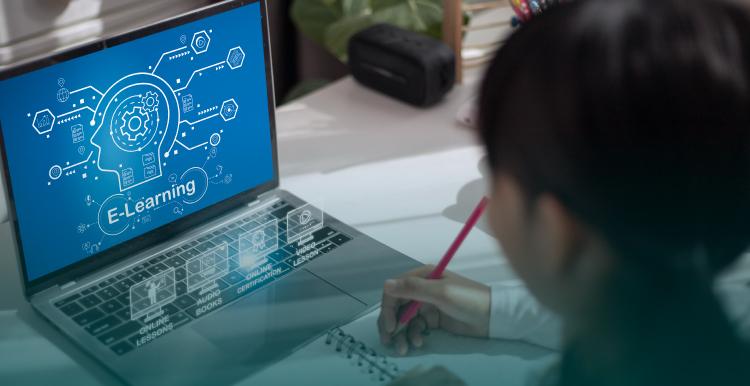The Next big Thing in EdTech: Top Predictions Shaping the Future of Education
The landscape of education is undergoing rapid change thanks to advancements in educational technology (EdTech). as digital tools and innovative methodologies reshape how we teach and learn, it’s vital for educators, students, and stakeholders to stay updated on the next big thing in EdTech. In this thorough article, we delve into the top trends and predictions set to redefine the future of education, offering insights, benefits, and practical tips for adopting these emerging technologies.
Why is EdTech Evolution Important?
The global EdTech market is projected to reach $404 billion by 2025 (HolonIQ). This surge is driven by the demand for personalized learning experiences, remote education solutions, and the increasing integration of artificial intelligence in education. Technology is not only making learning more accessible but also more engaging and effective.
Top Predictions Shaping the future of EdTech
1. Artificial Intelligence Will power Hyper-Personalized Learning
One of the moast disruptive trends in EdTech is the rise of AI-driven adaptive learning platforms. These systems analyze students’ learning patterns and customize curricula to cater to individual strengths and weaknesses. AI-powered learning analytics provide real-time feedback to educators, enabling them to tailor instruction and interventions.
- Smart suggestion engines suggest resources based on a student’s progress.
- Automated grading frees up teacher time for more meaningful engagement.
- Chatbots and virtual assistants offer 24/7 support to students.
2. Immersive Technologies: VR, AR, and XR overhaul education
Augmented reality (AR), virtual reality (VR), and the broader category of extended reality (XR) are redefining learning.These immersive technologies in education offer hands-on experiences that boost retention and engagement, turning abstract concepts into tangible realities.
- Virtual field trips allow students to explore historical sites or outer space from their classrooms.
- AR overlays can bring textbooks to life with interactive 3D models.
- Medical and engineering training utilize VR simulation for safe, realistic practice.
Case study: Arizona State University integrated VR labs in their biology curriculum, leading to an impressive 45% increase in student concept mastery.
3. Hybrid and Blended Learning will Dominate
the future of education is not strictly online or offline—it’s hybrid. Blended learning models that mix digital content with in-person instruction are becoming the new standard in K-12 and higher education.
- Flipped classrooms empower students to learn at their own pace using online modules.
- Teachers use classroom time for collaborative projects and personalized attention.
- Schools save on infrastructure while reaching remote learners.
Practical Tip: Incorporate asynchronous video lessons and live Q&A sessions to maximize flexibility without sacrificing community and engagement.
4.Microlearning and Bite-sized Education Will Flourish
The popularity of microlearning—delivering content in short, focused bursts—continues to rise. This approach aligns well with shrinking attention spans and the need for just-in-time knowledge in rapidly changing industries.
- Mobile learning apps make it easy to access content on-the-go.
- Mini-courses and learning “nuggets” are ideal for skill development in workforce training.
- Gamification elements increase student motivation and course completion rates.
Real-World Example: Duolingo’s microlearning-driven language lessons have attracted over 500 million users worldwide.
5. Data Privacy and EdTech Ethics Will Take center Stage
With the widespread use of EdTech tools comes an increased focus on data privacy in education. Schools and platforms must ensure that student data security, digital citizenship, and ethical AI usage are prioritized.
- Compliance with data regulations like GDPR and FERPA.
- Obvious communication about data usage and AI decision-making.
- Integrating digital citizenship into curricula.
6. Lifelong Learning and Upskilling Will Reshape Career Pathways
EdTech is empowering adult learners and professionals through lifelong learning platforms.Flexible, on-demand courses and digital credentials help bridge skills gaps, making continuous education more accessible than ever.
- Online micro-credentials and digital badges validate workforce skills.
- Self-paced learning empowers users to adapt to changing job markets.
- Industry partnerships with EdTech platforms (e.g., Coursera, LinkedIn Learning) are on the rise.
Benefit: Learners stay competitive and adaptable in a fast-evolving, tech-driven economy.
Benefits of Embracing the Latest EdTech Trends
- Accessibility: Breaks geographic and socioeconomic barriers.
- Personalization: Tailors learning to individual needs and goals.
- Engagement: Interactive tools and environments foster deeper understanding.
- Efficiency: Automation streamlines administrative tasks for educators.
- Collaboration: Online communities and global classrooms promote diverse interactions.
- Scalability: Reach more students without physical limitations.
Practical Tips: How to Prepare for the Next Generation of EdTech
- Invest in staff training: Ensure educators are cozy with new tools.
- Prioritize cybersecurity: Use platforms with robust privacy features.
- Choose scalable solutions: Select tools that can grow with your institution.
- Engage students: Involve learners in the selection and feedback process for EdTech tools.
- Foster a culture of experimentation: Pilot new initiatives and gather data to refine your approach.
First-Hand Experience: what Educators and Students Are Saying
“Implementing adaptive AI platforms transformed my teaching. Struggling students received individualized support, while advanced learners weren’t left waiting. The engagement spike was immediate.”
– Maria Rodriguez, High School Teacher
“VR science labs made concepts come alive. rather of memorizing diagrams,I ‘walked’ through cell structures and complex processes. It made all the difference in my understanding.”
– Jake Trembley,University Student
Conclusion: Embracing the EdTech Revolution
The world of EdTech is evolving at an unprecedented pace,with innovations like AI-driven personalization,immersive environments,and flexible learning reshaping education as we know it. The next big thing in EdTech is not a single technology—it’s the synergy of tools and practices that cater to learners’ unique needs,ensuring equitable,engaging,and effective learning for all.
By staying informed about the future of education technology and embracing these top EdTech trends,educators,administrators,and learners can be better prepared to thrive in tomorrow’s digital learning environments. start exploring these technologies today and be part of the movement transforming education for generations to come!

